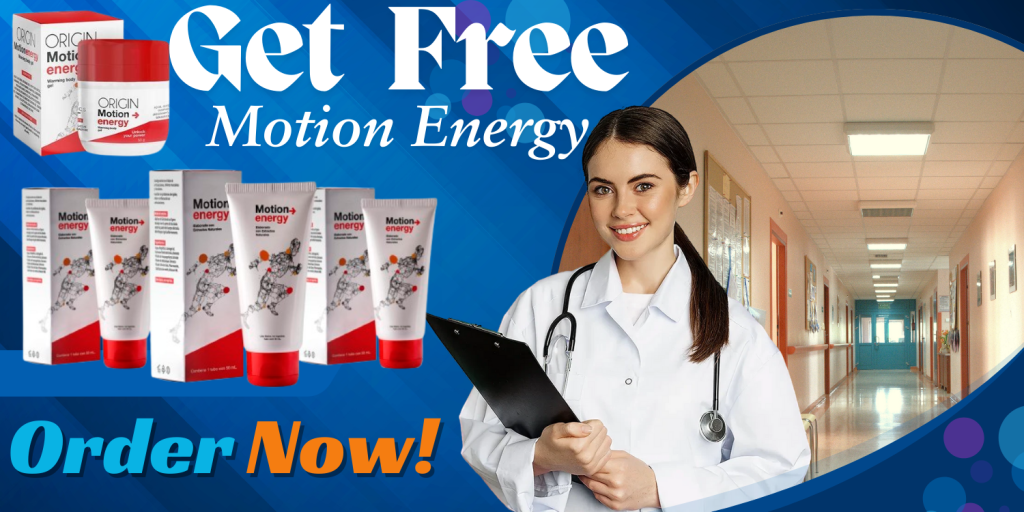What is an energy gel?
Energy gels are compact, quick-digesting carbohydrate packets designed for sprinting or endurance activity like cycling, hiking, and running. These gels provide a convenient and food source of the nutrients athletes most need to maintain energy reserves between the lengthy workout sessions and race efforts they undertake and are typically sold in small, portable pouches.
The basic ingredient in energy gels, simple carbohydrates rapidly replenish the body’s depleting glycogen stores, our muscles’ primary source of fuel. Some formulas contain caffeine to focus the mind and boost performance; alternate formulations do—or include electrolytes like potassium and sodium, which help with hydration and cramping. Energy gels’ syrupy viscosity helps make them go down easy on the run. Svelte by design, athletes can get light energy locally without stopping whatever they are doing.
Energy gels should be consumed along with water, as this aids in digestion and avoids gastrointestinal unpleasantness. This is especially useful for long trains when keeping fuel at a distance. Because they are used by a variety of users, from professional athletes to regular exercisers, they are widely regarded as an aid to optimizing endurance and recovery. There are many types that meet a variety of dietary needs and preferences.

What is a body balm that gets warm?
Warming body balm is a type of topical skin product, which means that once applied to your skin, it produces soothing warmth. These balms, designed to relieve tight muscles and help induce relaxation or comfort, include ingredients that cause a warming sensation on the surface of the skin. They’re in demand among athletes, sore muscle sufferers, and anyone looking to work out minor aches and pains.
The heat in these balms is typically produced by active ingredients like camphor, menthol, or capsaicin (the compound that makes chili peppers spicy), which cause an increase in blood flow to the affected area and produce a warming sensation. In addition to loosening up tight muscles, this feel-good sensation greatly increases your circulation, aiding relaxation and healing. Certain formulations deal with oils, such as lavender or eucalyptus, packed with herbal and aromatic benefits.
Warming body balms are user-friendly; usually they’re massaged into sore spots like the legs, shoulders, neck, or back. The warmth starts to develop after a few moments of getting absorbed in your skin from muscle rub balm.
Not like regular moisturizers or lotions, as these balms are for therapeutic purposes, not just hydration. Consumers need to patch test, wash, and repeat to avoid irritation, especially if they have sensitive skin. Warming body balms are practical and useful for relieving stress, relaxation, and recovering after exercise.

For What Purpose is Motion Energy Gel Used?
A notable topical product to help improve fitness performance, ease muscle and joint pain, and recover faster is Motion Energy Gel. It was designed for athletes, active people, and anyone whose muscles feel tight or tense from everyday activity.
This gel is primarily used to relieve pain associated with strained, sprained, or overworked muscles through topical application onto the skin across the affected area. It relaxes sore muscles and improves circulation by releasing chemicals that produce sensations of heat or cooling. And they can also temporarily decrease stiffness and inflammation, allowing you to move without pain.
It is designed as a warm-up supplement for athletes. Warming up adequately will improve blood and joint mobility before you train, thereby reducing the risk for injury and creating better flexibility. The gel aids recovery from physical activity by diminishing muscle fatigue and speeding up the body’s natural healing process.
Also, with regular use, it is known to reduce joint pain and improve movement, which may be beneficial if you suffer a chronic disease like arthritis. It is also non-greasy and fast-absorbing, allowing for relief on the go.
For these reasons, Motion Energy Gel is the go-to solution for a non-inhibitory alternative to enhancing foot and hand performance, as well as managing pain, to enjoy motion without pain and live an active lifestyle.

What is Origin Motion Energy Gel Used For?
General Purpose is also referred to as Origin Motion Energy Gel. Origin Motion Energy Gel focuses on energy improvement for physical activity, particularly during long or high-intensity activities. It offers a quick source of easily accessible energy for athletes, fitness enthusiasts, and active individuals in general. Packed with electrolytes and fast-absorbing carbohydrates—and sometimes caffeine or amino acids—this gel provides staying power, prevents fatigue, and even can boost performance during a continuous bout of activity.
You may have heard of Origin Motion Energy Gel before, as the primary focus up until now has been to provide a tool for highly concentrated carbohydrate refueling—that is, replenishing glycogen stores depleted by prolonged endurance sports such as cycling, swimming, hiking, and running. Its holding energy dips that may hamper performance. In a handy, portable little tub, it’s an easy snack that you can slip in your backpack for those days when you need to up energy without the fuss of heavy food or cooking.
This replenishes essential salts lost to sweat, helping you hydrate efficiently—and thereby supporting muscle function while reducing cramping risk. If the gel contains caffeine, it will also give an extra mental boost by enhancing sharpness and focus during hard work.
Depending on the person’s energy requirements, Origin Motion Energy Gel is usually applied prior to, during, or following activity. For endurance athletes who need consistent energy for prolonged periods of time, it is extremely advantageous. Maintaining enough hydration is essential for energy gel consumption in order to guarantee optimal absorption and performance advantages.

Do Energy Gels Actually Work?
Energy gels are commonly used by endurance athletes, providing quick and convenient fuel during long events or races. But are they truly effective? The short answer is yes, if used properly. Energy gels are usually a syrupy mix of carbohydrates, mainly derived from glucose, maltodextrin, or fructose. Because of this rapid uptake, these carbs give an immediate supply to replenish depleted glycogen stores. This is especially useful in endurance work over ninety minutes, and energy supplies have been well used. Studies have shown that energy gels can enhance performance by delaying exercise-induced fatigue and aiding in the stabilization of blood sugar levels during extended training.
Timing and consumption are everything when it comes to potency; taking a gel every 45 to 60 minutes during exercise, coupled with sufficient water to wash it down, activates its effects. But energy gels aren’t magic. In large amounts, or taken dry without water, they can cause gastrointestinal distress. Gels sit well with my gut, but others have to practice with them. Also, they’re not a substitute for proper hydration and nutrition before an event. In the end, energy gels work when used correctly and in the right context so that endurance athletes looking to boost performance and fend off fatigue have nothing to lose by giving this gear a try.

What are the advantages of using energy gels?
Endurance athletes commonly consume energy gels during extended exercises or competitions due to their convenient and straightforward form of energy intake. But are they truly effective? The short answer is yes—if done correctly. Energy gels are usually a concentrated mix of carbohydrates—often derived from glucose, maltodextrin, or fructose. These carbs are fast-absorbing and can provide an immediate energy boost to replenish used glycogen stores.
This is especially beneficial during endurance efforts that last for longer than ninety minutes, where muscle glycogen stores are far diminished. Performance during prolonged exercise can be improved by using an energy gel, as indicated by research that shows such gels delay fatigue and control blood sugar levels. Timing and consumption are key factors in effectiveness; consuming a gel every 45 to 60 minutes while exercising, as well as drinking enough water, will maximize its effects. Energy gels are not magic, however.
Taken too frequently, or without enough water, they can cause gastrointestinal upset. Athletes must train their digestive systems during practice to prepare for using gels. They also cannot replace appropriate pre-event hydration and nutrition. When to attempt energy gels: For appropriate, in the right setting, and used properly (as above), they actually do work, so best friend of endurance athlete seeking performance or wanting to prolong failure.
How fast do energy gels function?
Energy gels, which are convenient sources of carbohydrates, were designed to be taken on the go during strenuous cardio-based activities such as cycling, running, and hiking for an immediate energy boost. They’re favored by endurance athletes in particular because they are easy to digest and quickly enter the bloodstream.
This means that energy gels will take roughly five to fifteen minutes after their consumption to actually kick in’ (or really begin having an effect). What causes this rapid effect are the main ingredients, simple carbohydrates like glucose or maltodextrin. Because they are poorly digested, these sugars can bypass quickly from the stomach to the small intestine, where they are absorbed. Blood delivers glucose to the muscles, topping off glycogen stores and providing continuous support for action.
Digestion speed can vary based on metabolism, hydration status, and workout intensity. An energy gel needs water to be absorbed properly, helping with digestion and preventing gastrointestinal problems.
Depending on how hard you are working, they can provide a quick energy boost in 30–60 minutes. To keep a steady supply of glucose/vitality to postpone exhaustion, sportsmen frequently utilize them strategically, for example, by consuming one at regular intervals of 30-45 minutes during long exercise.
Conclusion of the Energy Gel
When it comes to energy gels, they can be great for athletes and the active looking to take their performance during endurance activities to another level. These small, handy power supplies can hit the spot quickly with some carb loading to assist in glycogen resynthesis and maintaining energy output over prolonged exercise. This means that they are ultra-portable—far more than, say, a sandwich or handful of nuts and seeds—and easy to digest in an easily accessible form, making them especially good for runners (or would-be ones), cyclists, and hikers who want immediate energy with at least [88] some point to ponder just how fat-filled their body might eventually be.
Energy gels have two big advantages: they provide a precise dose of energy and electrolytes, which are paramount in terms of hydration and muscle activity. Most formulations also include caffeine, amino acids, or other performance-enhancing substances designed to an individual’s needs. But you need to know how to use energy gels. Because they can be harsh on the gastrointestinal tract and affect absorption, you should take them with enough water.
While energy gels are a beneficial option for some people, they don’t work for everyone. Their use should be based on individual tolerance, type of activity, and amount of downtime. You should include that in a workout-appropriate nutrition and hydration plan.
In the end, energy gels are a researched, easily packed, and proven source of keeping your energy up for long periods. During training, athletes can try different products and timings to find what works.
